Hiking Mt. Rinjani: Everything You Need to Know in 2024
8 min readThis is a guest post by Luca Saunders.
For the intrepid adventurers among us, Indonesia’s island of Lombok is heaven. Off the beaten track and away from the overrated city of Kuta and bustling Jakarta, it is like taking a time machine back to 1995.
But the best part of Lombok isn’t its reputation as an untouched version of Bali, it is Indonesia’s second tallest volcano, Mt. Rinjani. Standing at 3726 meters (12,224 feet) above sea level, it has been drawing travelers and Indonesians alike to Lombok for decades.
In July 2023 I headed to the island to climb Mt. Rinjani myself, and after finishing the trek, I gathered together everything you need to know to climb it, so that you can conquer mountains too:
Mt. Rinjani Facts
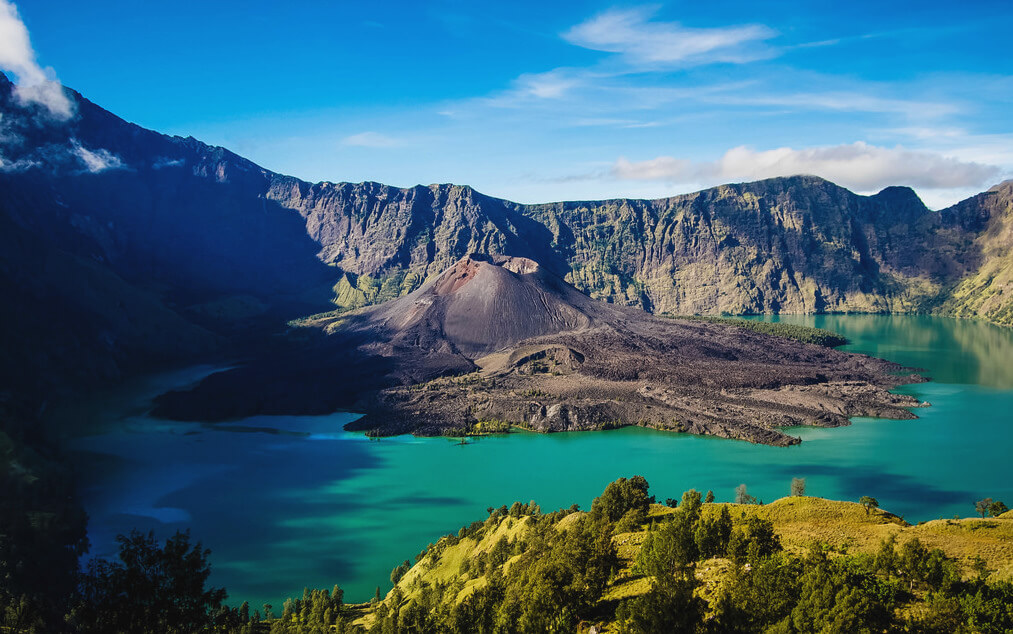
- Height: 3726 meters (12,224 feet)
- Distance: 22km (13.7 miles), 32km (20 miles), 35.7km (22 miles), or 40.2km (25 miles), depending on your tour
- Time: 2-4 days
- Starting point: Sembalun
- Weather: Be prepared for any weather conditions, especially rain
- Seasons: April-December, since it is closed January–March
- Difficulty: Difficult, or very difficult if you’re a less experienced hiker
- Permits: All permits are covered by your tour company
- Water: Water is provided; however, it is a limited supply
- Religion: Mt. Rinjani is sacred to both Hindus and the local Sasaks
How to Get to Mt. Rinjani
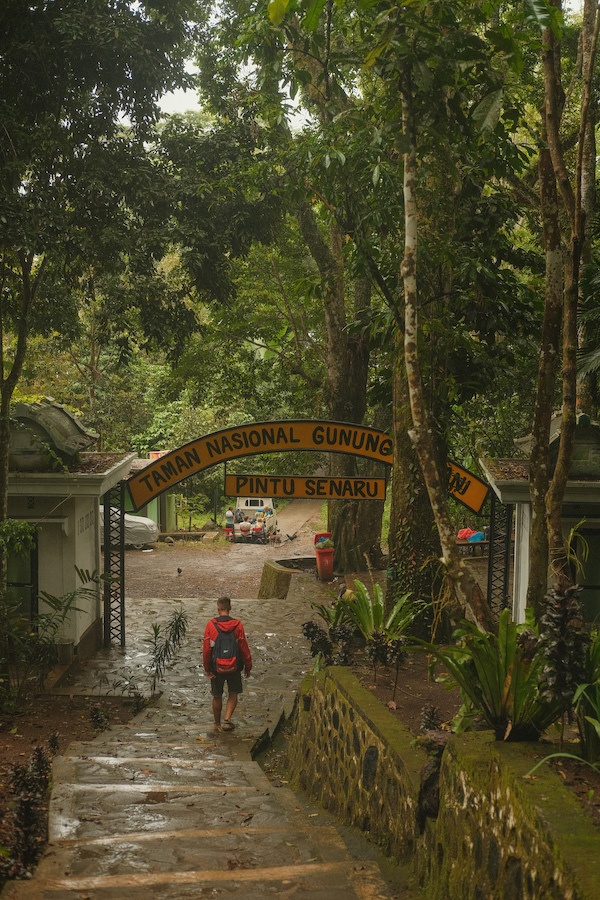
There are daily flights from Denpasar, Bali, to Mataram, Lombok, which can be easily found on any flight search engine. Flights in Indonesia aren’t expensive, but in the grand scheme of things they aren’t budget-friendly either.
Most people travel to the island of Lombok via fast boat, which you can take a from pretty much anywhere. This is the cheapest option. Popular ports that depart to Lombok include Padang Bai Harbor and Serangan in Bali, Gili Air, Gili Meno, Gili Trawangan, Nusa Lembongan, and Nusa Penida. When I’ve traveled through Indonesia, I’ve found that the easiest (and cheapest) platform to book fast boats on is 12Go.
It is important to remember to read the reviews on fast boats. Consider anything above three stars good — the turbulent water and lack of air conditioning mean that some people don’t have a good experience. After taking plenty of such fast boats, I recommend getting a spot in the first row if the front door is open, or the back seats to access the outside for fresh air.
How Many Days Should You Hike?
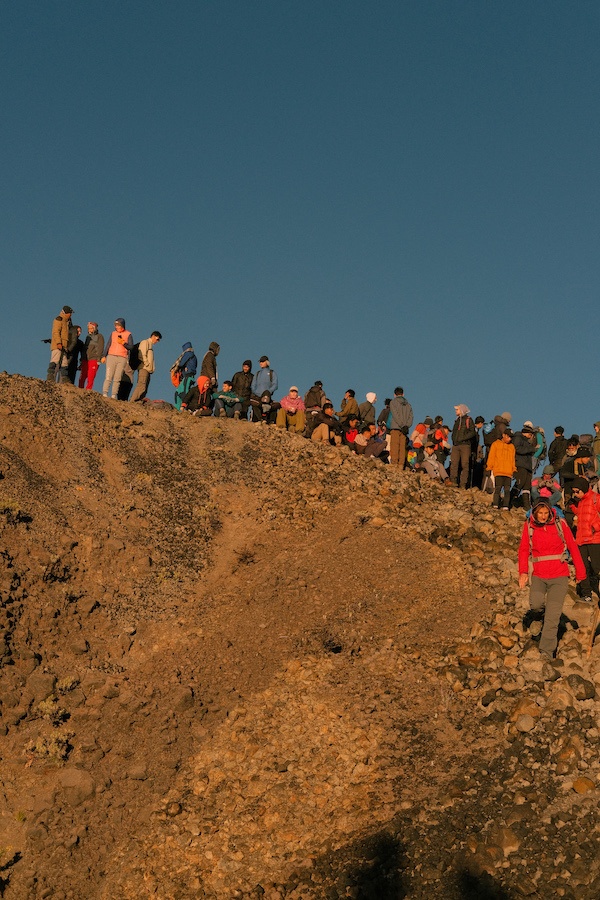
There are a few options when it comes to the length of your Mt. Rinjani expedition. Most tour operators offer trips of two days/one night, three days/two nights, or four days/three nights.
Most people do the first option. This route takes you from Sembulan up to the crater rim, from there to the summit, and back the way you came. It’s the route usually favored by less experienced hikers, as the second day of the three-day trek is notoriously difficult. However, it does mean you miss out on some beautiful scenery, and this famous hot springs:
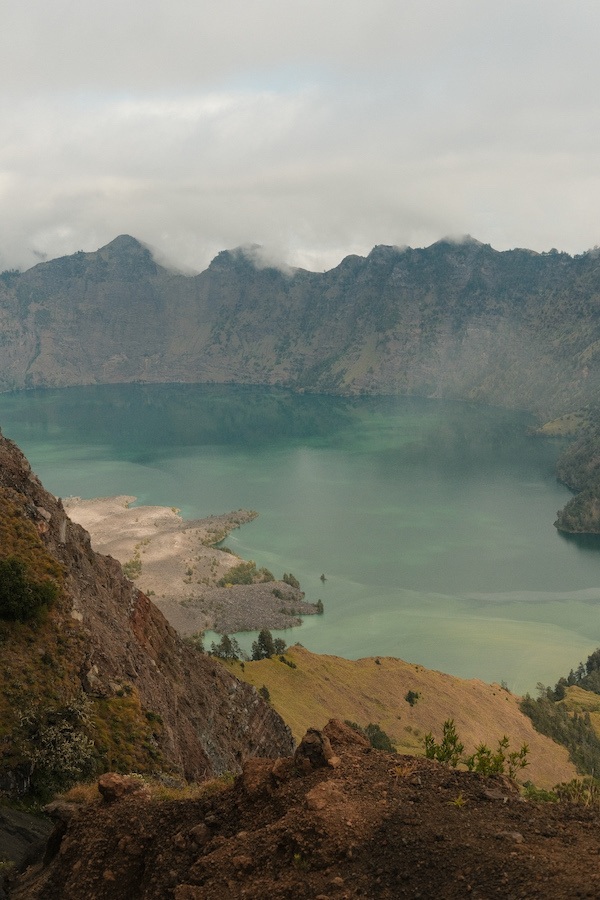
When I climbed Mt. Rinjani, I opted for the three-day route. I had little experience with significant elevation gain or higher altitudes but a reasonable amount of long-distance trekking under my belt.
Day 1 of the three-day trek is the same, where you go from Sembulan up to the crater rim; however, day 2 involved climbing up to the summit and back down, followed by a really steep descent into the crater, walking across it, and back up the other side.
We walked for over 20km (12.4 miles), gained 2,000m (6,500 feet) of elevation, and lost a similar amount. To put it into perspective, we started walking at 2 a.m. and only arrived at camp 2 at 9:30 p.m.
For a more peaceful second day, you can opt for the four-day route. Day 1 is the same; however on day 2, you camp on the edge of the crater lake instead of climbing up the other side. After hiking to Rinjani’s summit, shorter third and fourth days mean you can take more time to enjoy the scenery and atmosphere.
How to Book a Mt. Rinjani Hiking Tour
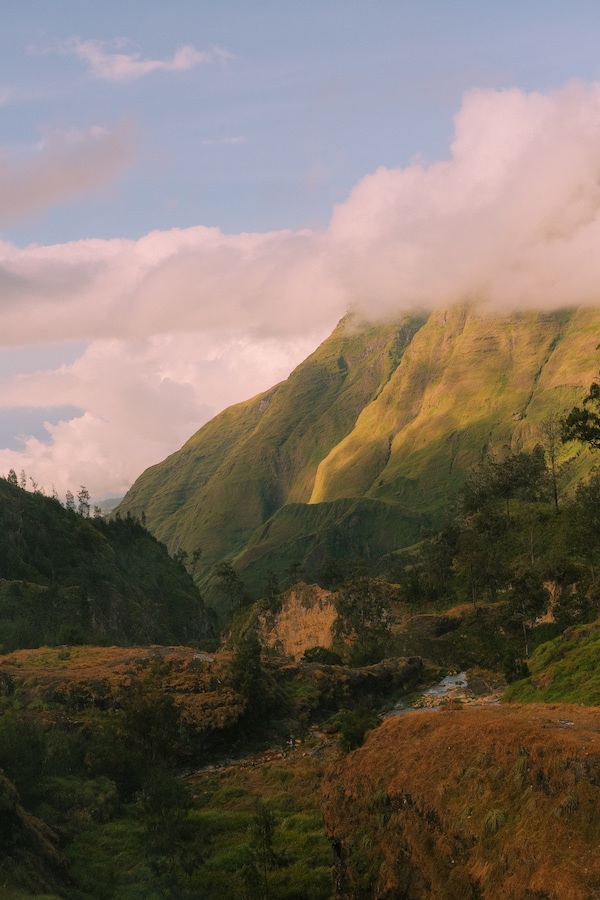
I booked my tour in pure backpacker fashion, showing up at my hostel and asking around. Luckily for us, the hostel owner had a connection, and we managed to get a spot three days in advance for only $100 USD.
As with everything done this way, you could be lucky like me, or you could be left scrambling. I still recommend asking locals above any other method, as it often ends up being much cheaper.
I also recommend you don’t book from a tourism stand on the side of the street; always book through a company directly. Tourism stands often keep the names of their companies under wraps, meaning the company can litter and harm the mountain with no repercussions.
If you really want to book in advance, it’ll be more expensive, but Green Rinjani is the way to go. Not only does it provide top-level service, but it also plants trees and works to restore the beautiful mountain and surrounding nature.
Mt. Rinjani Packing List
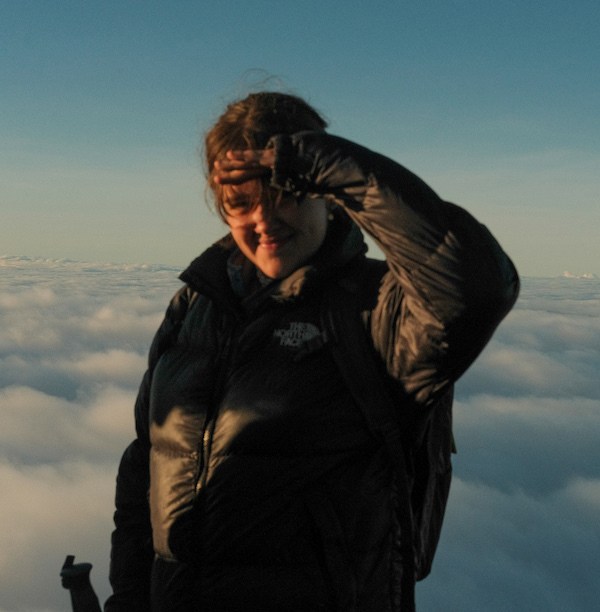
- Day pack: A 40-liter backpack is usually enough
- Clothes: Hiking pants, two T-shirts, a fleece, hiking/ski socks, a buff, a hat, sunglasses
- Warm clothes: Thermal layers, puffer jacket, gloves. The summit is 0-4 degrees C (32–39 F) and the crater rim is below 10 degrees (50 F) at night.
- Camera/ phone to capture your memories!
- Snacks: A bare minimum of food is provided (with no snacks for many tours).
- Sandals: We wish we’d brought these for camp
- Good footwear: Bring good hiking boots if you can
- First aid: Tours have basic first aid, but I’d recommend you bring paracetamol and antinausea tablets
- Swimwear: If you opt for 3-4 days, there are amazing spots to swim!
- Microfiber towel, for if you go swimming
- Plastic raincoat and bag cover: The weather can change fast
- Cash: Always bring cash for rental gear, snacks, and transport
- Hand sanitizer and baby wipes, to stay hygienic
Click here for a complete backpacking packing list. Porters carry all camping gear, food, water, and cooking equipment. However, they won’t carry any of your personal belongings for you.
What to Expect on Mt. Rinjani
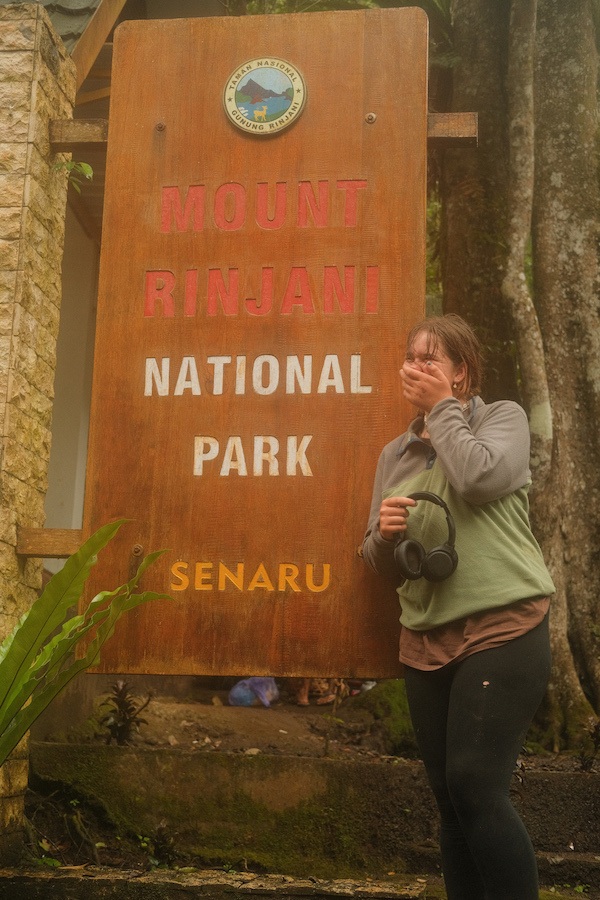
What should you expect on a Mt. Rinjani trek? Are the campsites OK? What are the wake-up times, and how is the food? Here’s everything you need to know before you choose to climb Mt. Rinjani.
Weather
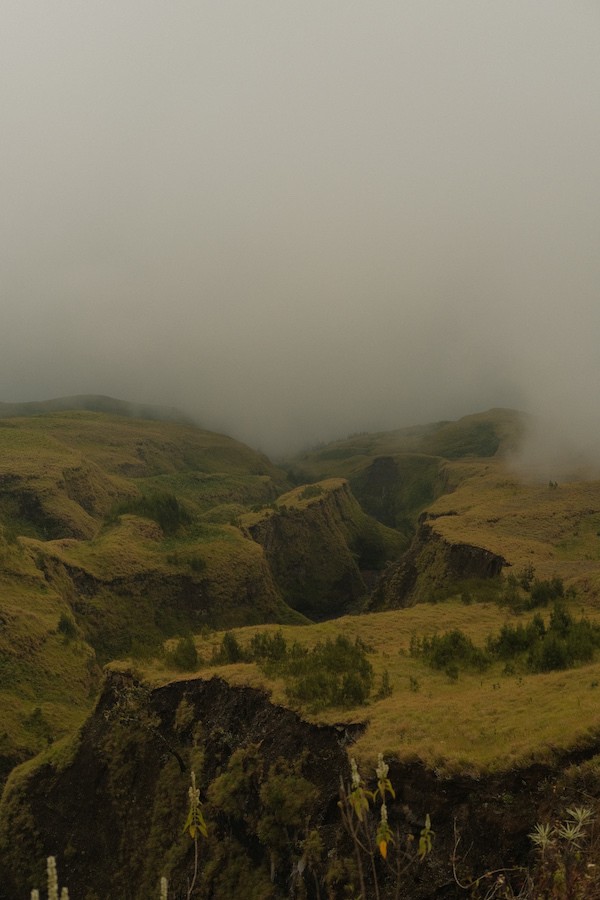
Weather on Rinjani can be hit or miss. During our tour, they told us we didn’t need raincoats, and we were incredibly unlucky, encountering a terrible thunderstorm two hours in. This left us drenched, and our shoes stayed wet for the next two days.
All of this is to say that the weather changes dramatically in the mountains, and you’ll need to be prepared.
If you’re lucky enough to see the crater without clouds from the summit, you’ll have the greatest view of your life. Unfortunately, an endless pillow of clouds covered the islands during our summit experience.
The temperature during the day can be anything from 15 to 25 degrees Celsius (59–77 F), while at night it often drops below 10 C (50 F), and stays between 0 and 4 C (32–39 F) on the summit.
Food/Snacks
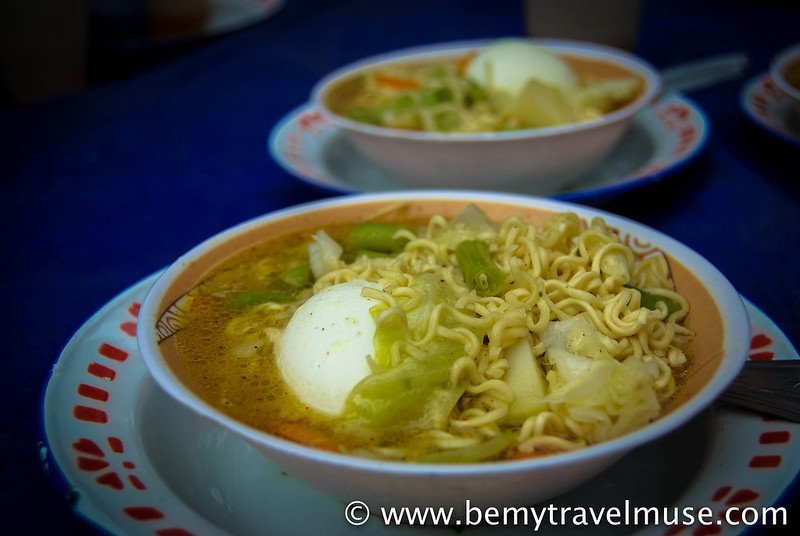
The price you pay for your tour usually determines the quality of your food. I paid very little, and though we got delicious Indonesian food for lunch and dinner, we operated off two slices of plain toast for summit-day breakfast.
We watched with envy as the higher-paying climbers ate fruit platters stacked with fresh fruit and protein-filled meals.
Luckily for our empty stomachs, makeshift snack shacks are located at each campsite. The choices get much more limited (and the prices reach borderline extortion) as you trek farther. But after a seven-hour trek, a feast of Oreos is worth every cent.
Campsite Conditions
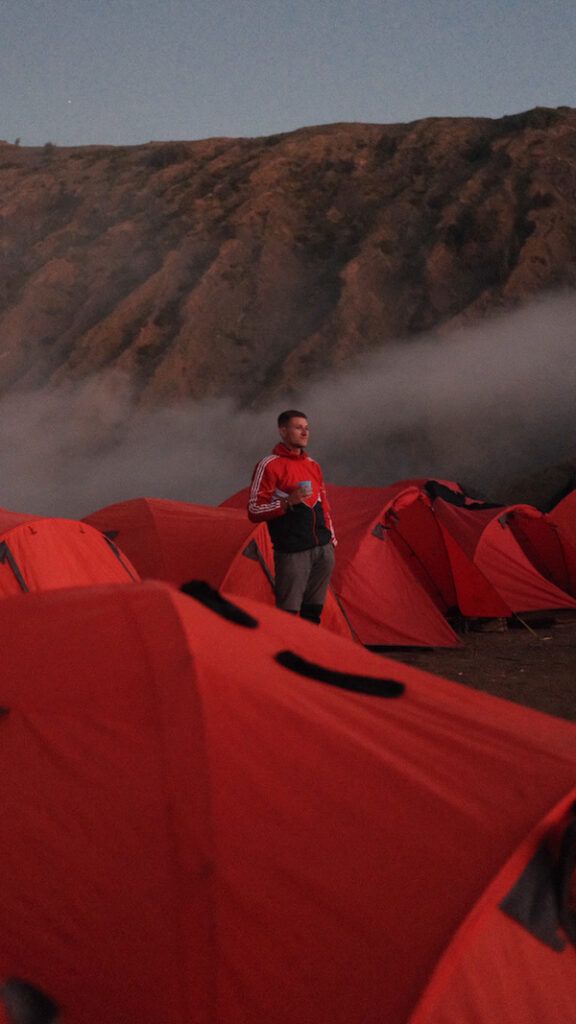
Sadly, over the years, tour companies and climbers have not been careful about leaving trash on Rinjani, especially at Camp 1 on the crater rim.
Campsites can be a little dirty, but trust me when I say that after your days walking, it won’t feel that important. Just make sure you pack some hand sanitizer if you can, just to stay hygienic when you’re eating.
The tents are usually good quality, but our mats were very thin, which made it difficult to sleep comfortably. The sleeping bags were also quite thin for the cold nights. This is one reason I highly recommend you bring thermals to wear to sleep. And keep in mind that the more you pay, the higher quality the gear becomes.
Wake-up times

Wake-up times… are early. Usually, tours depart from their base at 7-8 a.m., which is very normal. But then comes day 2, and the infamous 1:30 a.m. start.
In order to reach the summit by sunrise (and camp 2 before midnight, for those doing three days), the wake-up call is 1:30 in the morning. By 2 a.m., you begin to hike and should arrive back at camp by 8:30-10 a.m.
On our third day, we opted to wake up early, at around 6 a.m., to get down the mountain quickly. However, start times are usually around 7 a.m. for days 3 and 4.
Toilets
The bathroom situation on the mountain isn’t pretty. Some fancy tour companies have pop-up stalls, but usually, the toilets are a hole in the ground with a tarp propped around some sticks. The toilet paper gets pretty soggy, and the whole thing becomes less than nice after 10 hours.
You could also opt to bring your own toilet paper, which may make things nicer but also take up some space in your bag.
Is Mt. Rinjani Difficult?
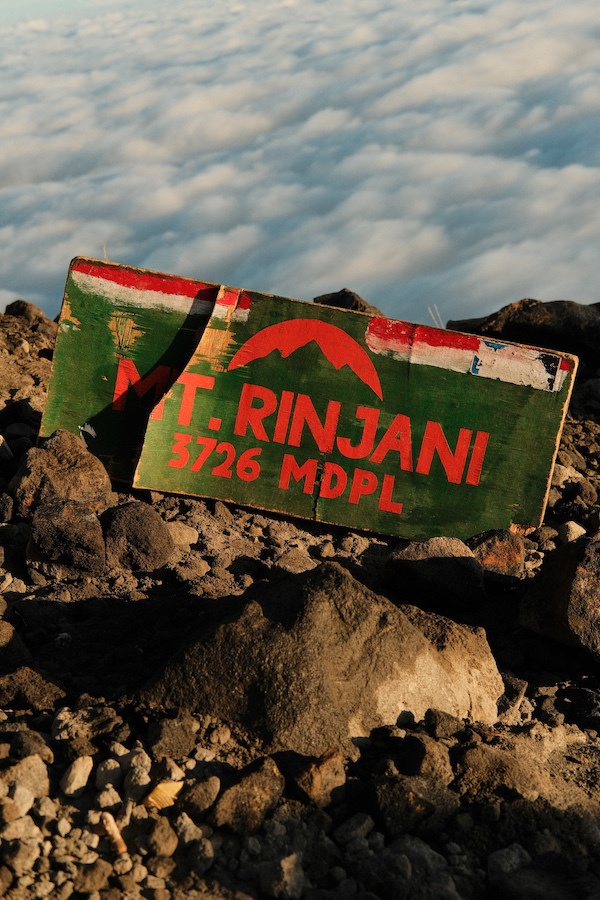
For many people, Mt. Rinjani will be the hardest thing they ever do. We came across several mountaineers who said the trek was easily more difficult than Mt. Kilimanjaro, the highest mountain in Africa.
With such a fast elevation gain, much of the hike is incredibly steep for sustained periods of time. And the final 5km (3 miles) to the summit is what makes it the most tricky. The last kilometer alone takes three hours, up a 45-degree slope made of rocks, ash, and sand. Every two steps, you slide back one, almost like walking up sand dunes for hours on end.
That being said, though it may not be easy, many people have the ability to summit Mt. Rinjani. I saw people young and old, fit and unfit, and from all walks of life going for the summit. Anyone with a reasonable fitness level, grit, and determination is capable of a Rinjani summit.
The Best Time to Hike Mt. Rinjani
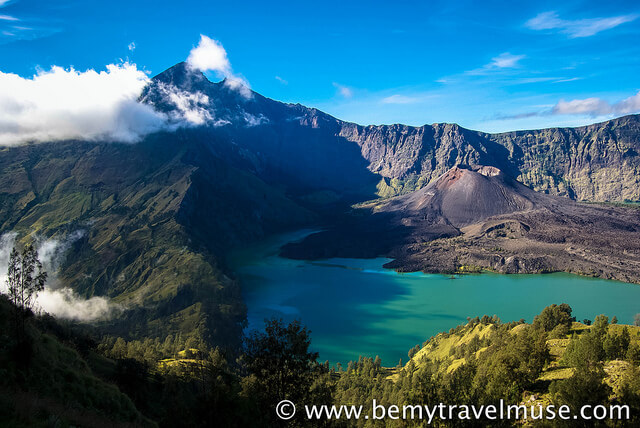
Rinjani is closed from the January 1 until March 31 due to heavy rainfall. Keep in mind that April and December are shoulder seasons, meaning there is typically more rain then as well.
Hiking from May through October will give you the best chance of clear weather. But if my experience shows anything, it’s that nice weather is never promised, even in July.
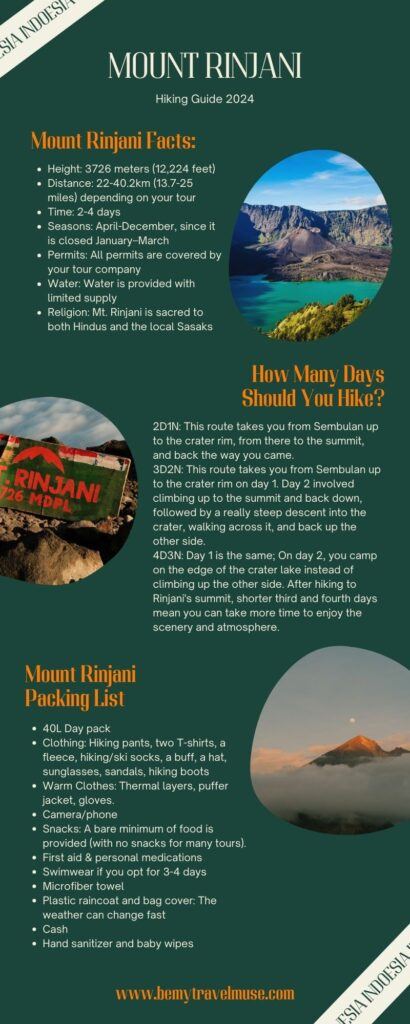
Mt. Rinjani is the experience of a lifetime and one of my favorite solo travel adventures to date, with awe-inspiring views, a real mental and physical challenge, and memories to look back on forever. You’ll never regret a Mt. Rinjani trip!
Happy trekking!
About the author: Luca Saunders is an 18-year-old traveler and the creator of Hello World, Here I Come.



